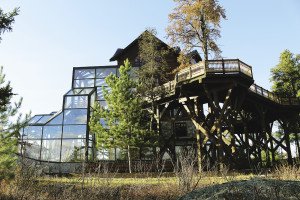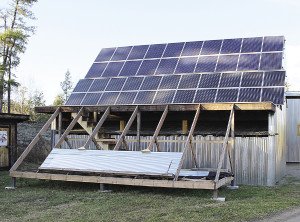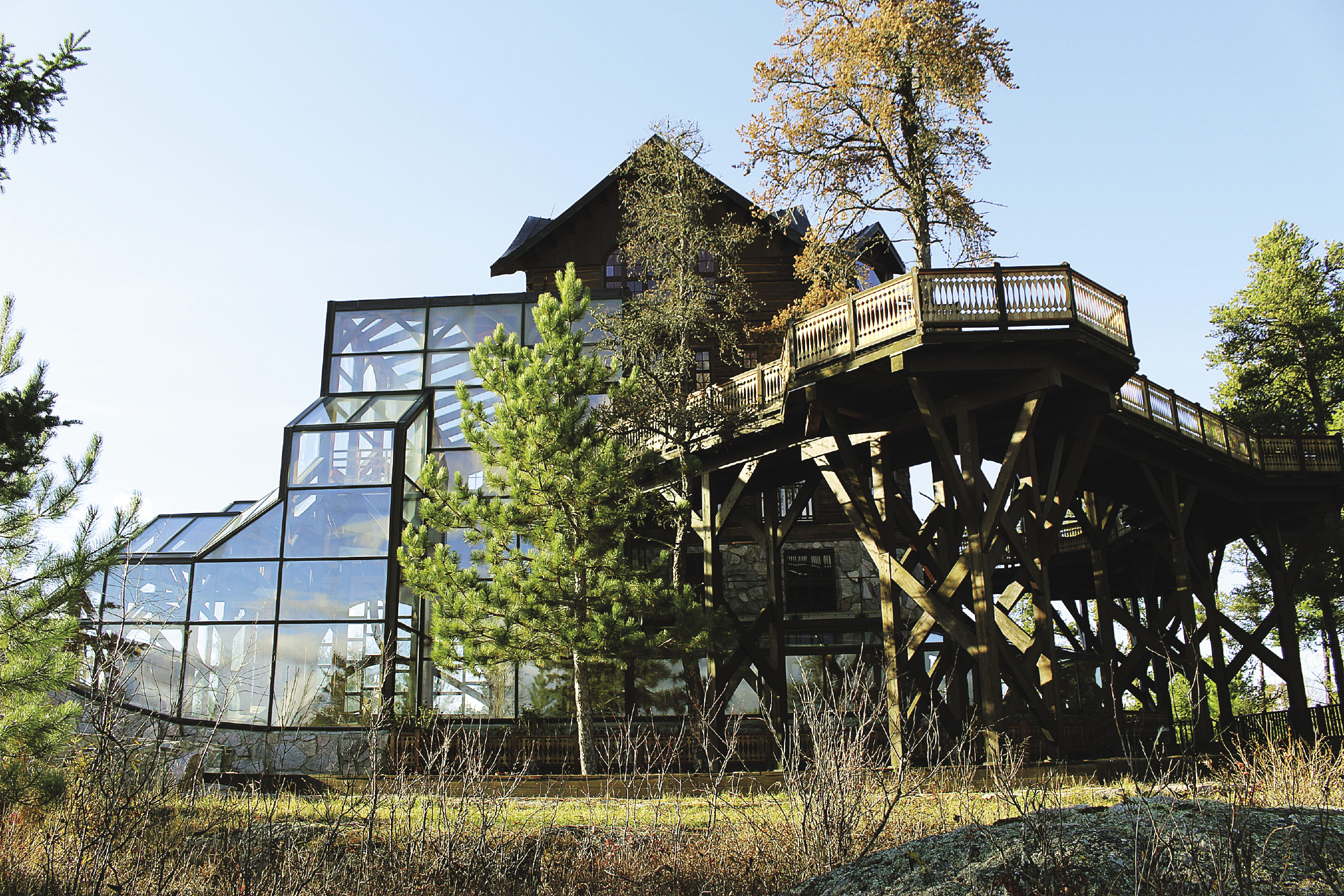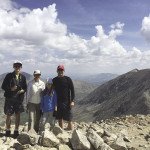Ely—Life is all about “self” for polar explorer Will Steger … as in self-sufficient, self-sustaining, self-contained and self-determined. Most recently it’s exemplified by a stand-alone, renewable-energy, conference retreat center in the wilderness outside of Ely. But it’s more than a demonstration model for viable energy solutions and environmental stewardship. The Will Steger Wilderness Center offers a living example of what “self” can do to affect collaborative problem-solving, innovation and inspiration for global and social issues.
Steger said that ever since he was a child, self-sufficiency was his main principle in life. He envisioned himself chopping trees, building a cabin, clearing a back 40 and having a garden. He wanted to live a life where he didn’t need personal materials and waste his precious time working at a job for stuff he didn’t need.
“To me, a true American is self-sufficient. That means we don’t need fossil fuels. We don’t depend on the big corporations,” he said.
Phase I of the center’s “island-mode” power grid was completed this fall. This $80,000, self-sufficient electricity system combines solar and battery sources. It supplies up to 20 kilowatts of power to main buildings in the complex. The power grid can also be monitored online to remotely observe its daily operations. It’s a unique educational tool for schools at all levels.
Prior to the island-mode power grid, the center operated on seven generators. Now they’re reserved as back-ups. In the short time since throwing the switch to solar power, Steger said generator use has already dropped by two-thirds. His goal is to cut it to two percent.

The Castle is the centerpiece of the complex. It’s the conservatory, still under construction, that will become the primary conference center. It features 3,000-square-feet of glass and Douglas fir timber framing. The stonework is from locally harvested granite, and defines the aesthetics of the foundation, walkways, gardens, wading pools and small waterfalls that will flow through the center’s first floor.
The lodge is currently the main conference building. It’s also the kitchen and dining area. Steger said a new dining hall will be forthcoming and include proper shower and washroom facilities necessary for conferences.
The workshop played a large role in the construction of the center’s buildings so far and will be vital to its completion. It houses a highly organized array of heavy machinery, power tools and hardware. Recycled wood, stained glass, routers and an inner shop area for detailed woodwork such as intricate door designs will be part of the finished project.
Along with a focus on clean, sustainable energy, the center will feature additional programs that take on other critical and complex issues of the day. These will also offer opportunities for personal and professional growth like intern residencies, apprenticeships, and service learning and leadership programs.
As an explorer for over 50 years, Steger directly participated in important polar expeditions returned with eyewitness accounts of accelerating climate change. He relies on the small-group dynamics of those expeditions and wilderness inspiration for potential problem-solving.
Steger said he felt the biggest impact of his life would be to reach decision-makers and leaders. So the wilderness center will host leadership programs designed for small groups of seven or eight people to unleash “breakthrough thinking and discovery.” According to Steger, “good, off-grid living” is the best way to spark inspiration and attain levels that are very hard to reach anywhere else.
Peter Wahlstrom is an ethics instructor at Anoka Ramsey Community College-Cambridge (ARCC) and is the advisor for the environmental club. He said ARCC serves a rural community where many of the students typically haven’t had a strong push to seek higher education. Along with examining theories of controversial ethical issues, he includes a service learning component as part of the coursework. It helps students break from their mold and show them their own capabilities. One option is for students to work at the Steger Wilderness Center and observe “ethics in action.”

Wahlstrom said the experience helps him address how ethics theories are put into practice. Plus it comes with the bonus of working on student psyches when they realize they’re working for a greater cause. Though there can be some initial grumbling about this type of “homework,” he sees a transformation in students. In the span of three days they’re different people. Some say the experience changed their life and they return to volunteer more, even after graduation.
“From an educator’s standpoint, that’s just gold. I’ll spend a whole semester [in the classroom] trying to achieve that transformation. I can do that in one weekend up here.” Wahlstrom said.
Riki Cummings is one of those returning students. She graduated from ARCC and continued studies in dental hygiene. Initially, she said she was turned off about the course assignment because she wasn’t the “camping” type and she didn’t like bugs or dirt. At the time, she also questioned why she was working so hard for a person she barely knew, Will Steger. But those challenges created a community with the people she worked beside and now the center is an escape for her.
“I just want to help him out and try to help him achieve his dreams and his goals,” she said. “It’s interesting how you don’t know someone, but would do anything to get the job done.”
Steger gratefully acknowledges those who have made invaluable contributions to the project so far. They range from on-site volunteers and technical experts, to donations and consultation from partners like Sundial Solar, the University of St. Thomas, Cummins Power Generation, tenKsolar and BAE Batteries. But there is much more to do to finalize the center and he wants to complete it soon.
“I don’t have 30 more years,” Steger said. “What I want to do before I’m over the horizon is to have a program defined, a philosophy defined, so it can go on its own … This is much bigger than myself.”
Follow events and updates at the center online at www.stegerwildernesscenter.org.




